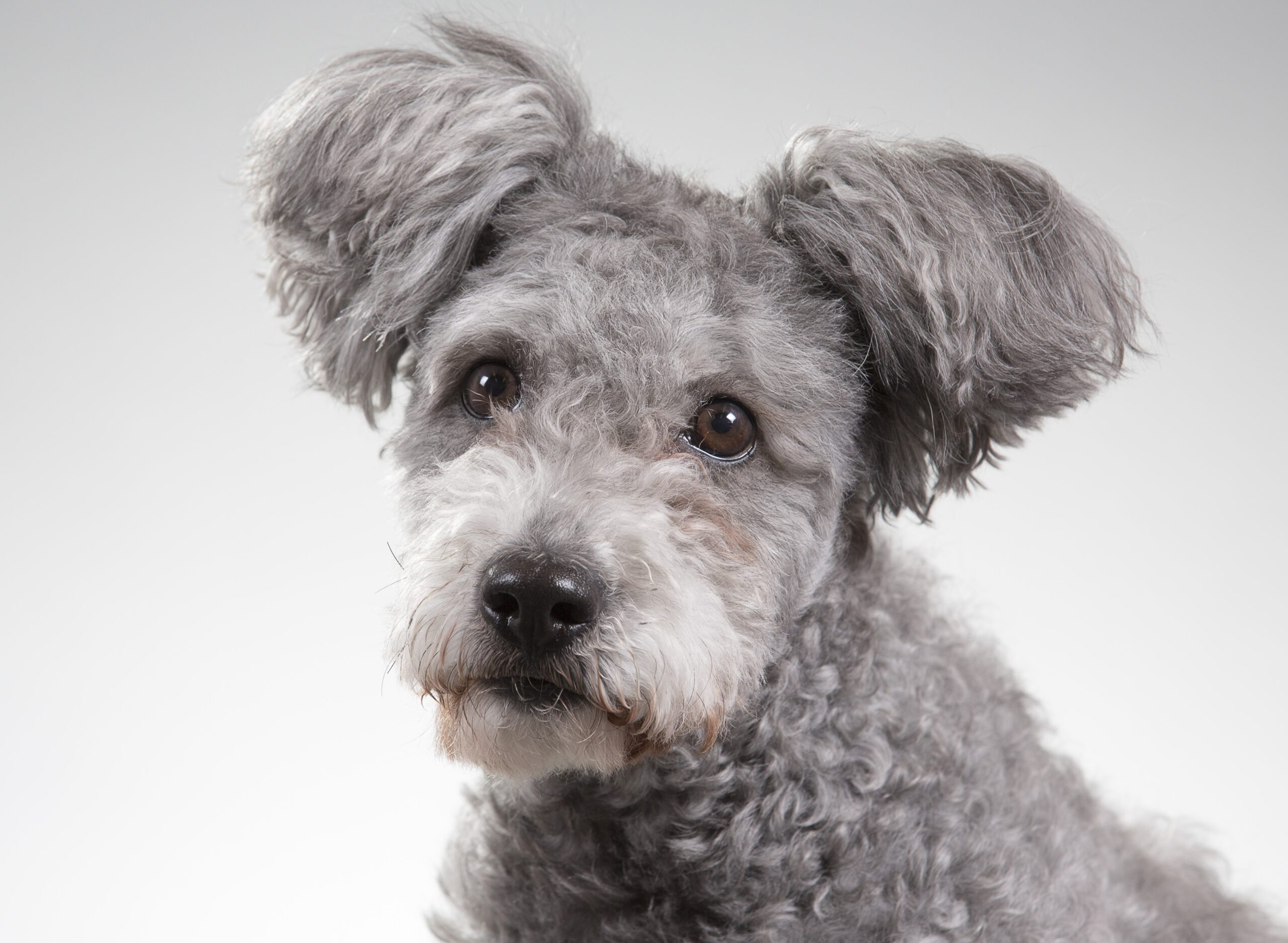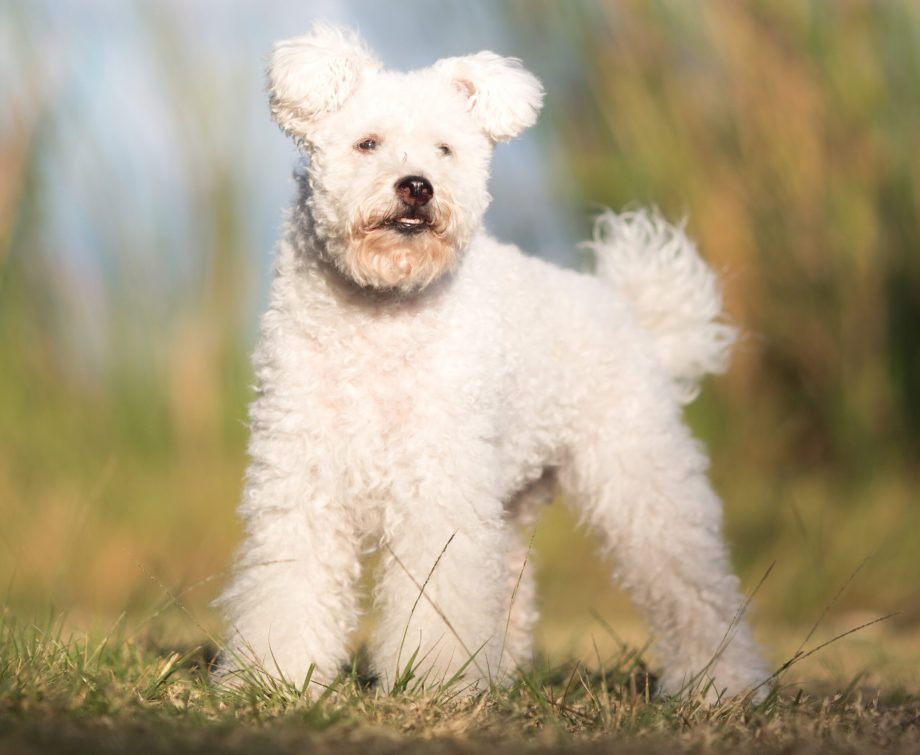The Pumi is a small-medium herding dog originating in Hungary. It is instantly recognisable from its corkscrew-curled coat, semi-erect tufted ears, distinctive whimsical expression and tail that forms a circle over the back.
Their curly coat comes in varying shades of grey, white or fawn. They are lively and energetic dogs, which are super agile and nimble-footed. Similar to the other Hungarian herding dogs, they are an intelligent and loyal breed which forms close bonds with their owners. They are naturally protective of their family and territory and can be distrustful of strangers, making early socialisation and training particularly important with this breed. With correct training, they make excellent family dogs which will get on well with children and other animals. The Pumi is an active, intelligent and playful breed which likes to be kept busy. They benefit from lots of outdoor exercise and will relish opportunities to play, herd and take part in agility. Their playful ways continue well into adulthood, which has given them the Hungarian nickname, the clown. The appealing looks and fun-loving temperament have earned them many fans in recent years, and with good care and training, they make excellent companions.
History

The Pumi is believed to have come form the cross-breeding of the Hungarian Puli with terriers and German Spitzh dogs from the 17th Century onwards.






